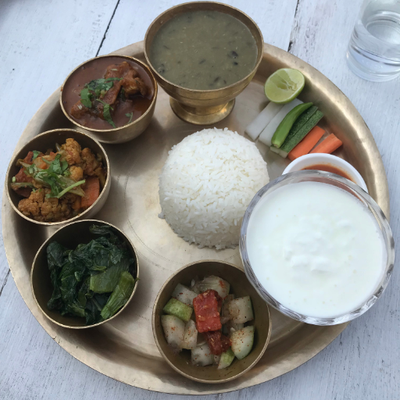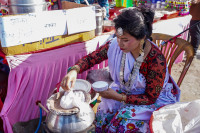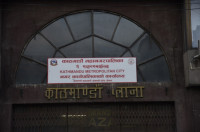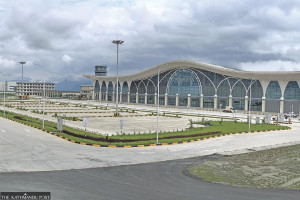Food
Getting a little Tibetan soul in Thamel
Little Tibet Restaurant and Bar offers diners a culinary journey to two of the least known cuisines of South Asia.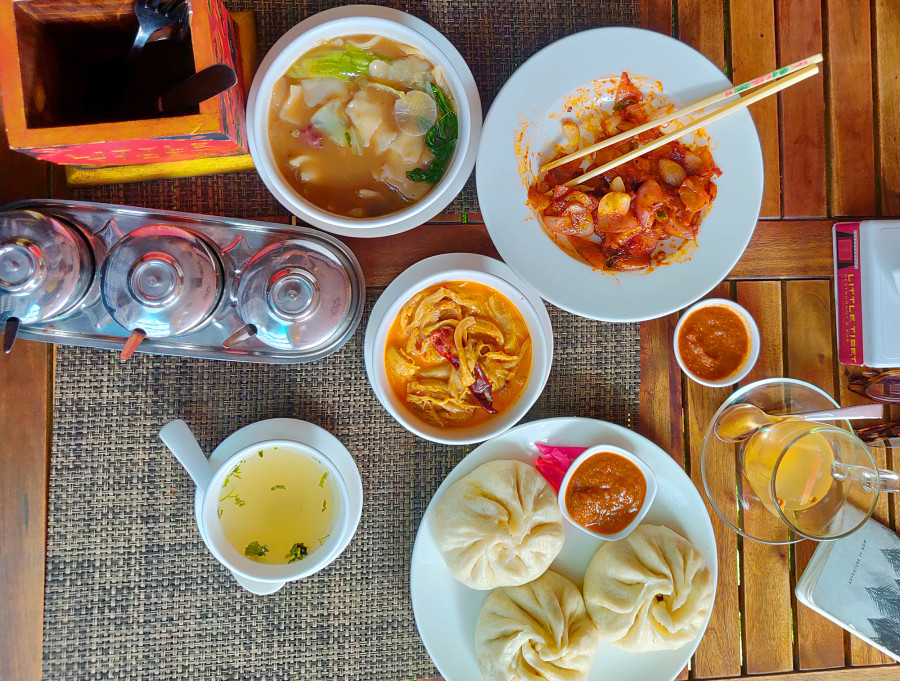
Hantakali
Where once was Smoking Joe's, an Indian pizza franchise, now sits Little Tibet Restaurant and Bar. Smoking Joe's, which opened in late 2017, served decent pizza, but Thamel is filled with pizza joints. Within a year, the restaurant closed, and as it is with Thamel, something else took its place, wiping away any trace of the earlier avatars.
Just like Smoking Joe's wasn't the only restaurant serving pizza in Thamel, Little Tibet isn't the only spot that serves Tibetan and Bhutanese food. But there are far fewer Bhutanese and Tibetan restaurants than there are pizza joints, which should give Little Tibet enough room to excel if they manage to impress with their food.
The first thing that makes an impression is the restaurant's interior. The restaurant looks every bit Tibetan. Traditional curtains embroidered with the Tibetan endless knot cover doors and short curtains emblazoned with the eight auspicious symbols hang like bunting from the ceiling. A room-sized piece of fabric, decorated with the Buddhist Dharmachakra, is draped from the ceiling, and even the table cloths have design elements and colour patterns found in Tibetan homes. This fastidious attention to detail is promising.
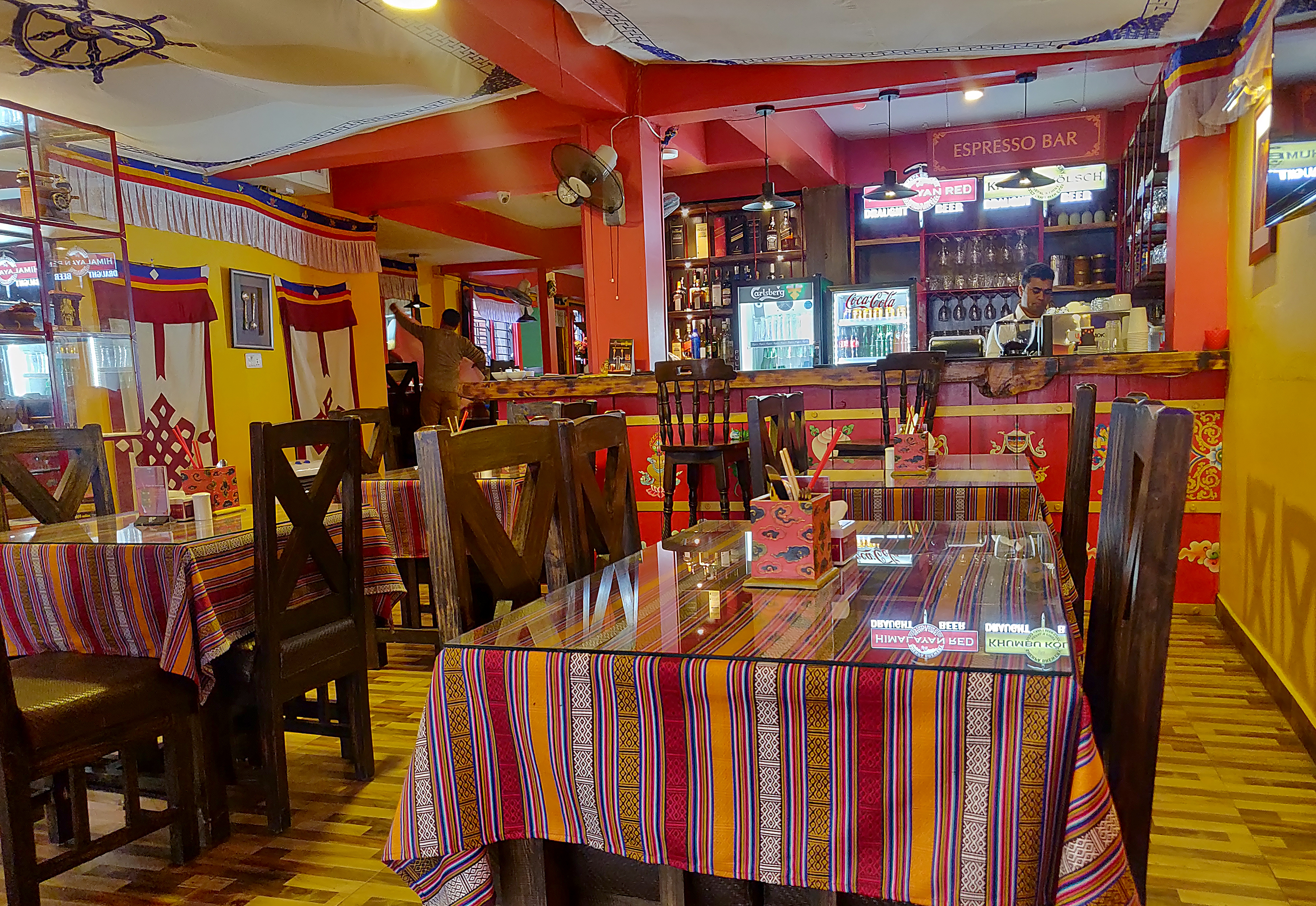
The menu features the usual Tibetan restaurant mainstays of thukpas and momos. But it is the presence of classic Tibetan dishes like gyuma (Tibetan blood sausage) and lowa khatsa (stuffed lungs)—both of which very few Tibetan restaurants in the city serve—that is sure to pique the interest of adventurous diners’ and delight seasoned eaters of Tibetan cuisine as well.
The menu also has a Bhutanese section and features perhaps Bhutan's most famous dish, ema datshi, and a few other variations of datshis.
Little Tibet does some of its Tibetan dishes slightly different from the alleys of Boudha and Swoyambhu. For the gyuma, Little Tibet uses goat instead of buffalo intestines, a more common casing in many smaller hole-in-the-wall Tibetan restaurants. The gyuma's stuffing is different too, as the buff is finely machine-minced and not mixed with tsampa (roasted barley) and blood. Traditionalists might argue that the gyuma stuffing should be hand-chopped and mixed with blood and tsampa, but that can make the gyuma chewy and dense, which can be a bit overwhelming for the uninitiated. Given Little Tibet's clientele—likely foreigners and locals sampling Tibetan food for the first time—the restaurant's version of gyuma makes sense. The finely minced meat is easy to chew and is moist and juicy. There's minimal spice, which lets the meat take centre stage, and the slightly burnt outer edges of the buff filling lend the dish a comforting crispy texture.
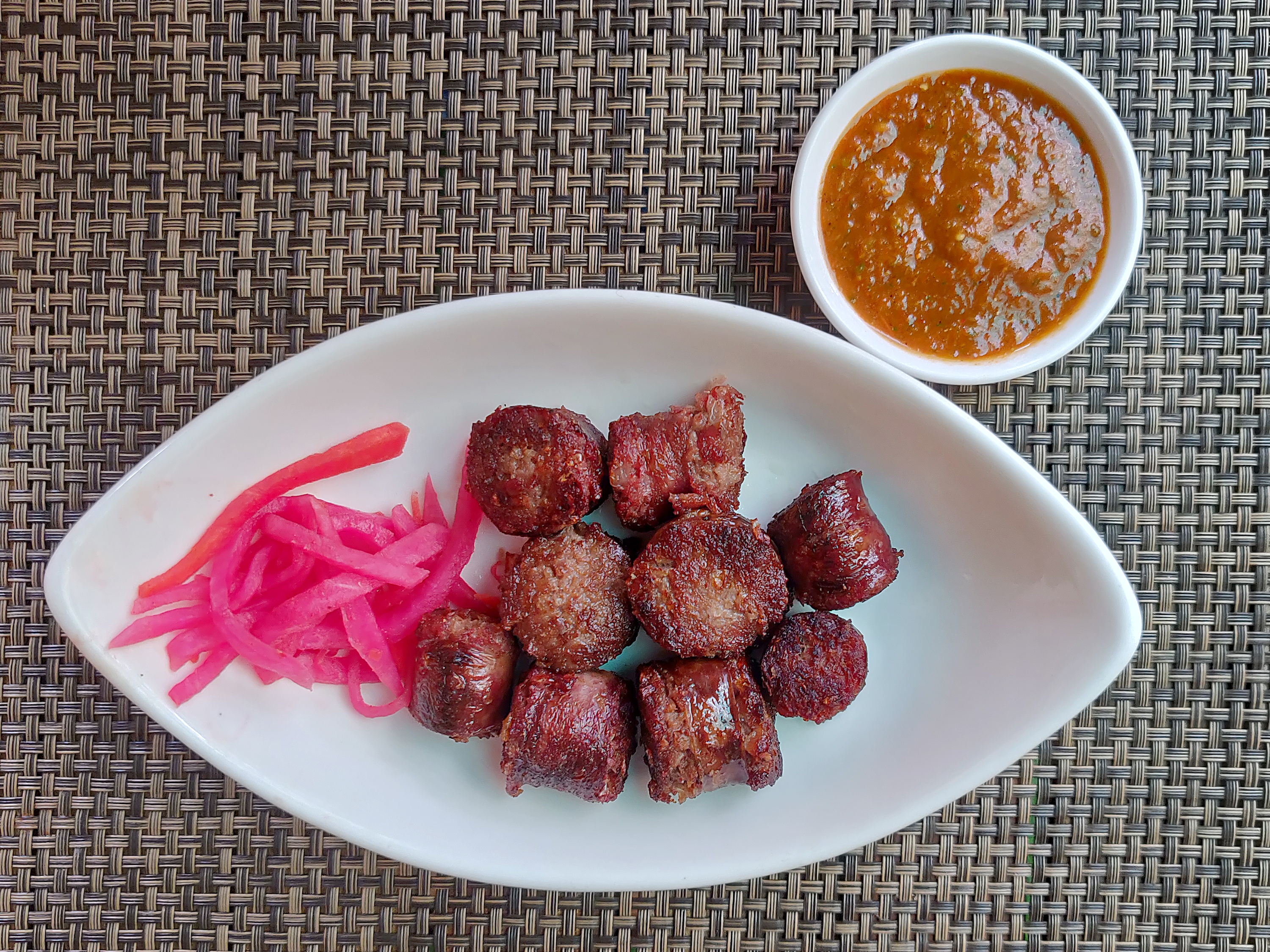
While the deviation from tradition works for the gyuma, that’s sadly not the case with the restaurant's thenthuk, a hand-pulled noodle soup. The broth is tepid and insipid, seemingly made from vegetable or chicken stock cubes, which is unacceptable given that the restaurant charges upwards of Rs 250 for a bowl. The traditional slow-cooked bone broth would have added heft and a comforting gelatinous tilt. But apart from the broth, everything else about the thenthuk is true to tradition. The hand-pulled noodles are not longer than a thumb and are cooked to the point where they’re slippery and chewy. There is cabbage, coins of radish, a few strands of bok choi, onions, and a few thin slices of buff. But the dismal broth leaves the dish unsalvageable.
The pork dha pao quickly turn things around. These fist-sized dha pao packets of bread and meat are akin to momos. But despite their size, the dha pao’s wrapping is fluffy and airy, which make a lot of difference when biting into these giant momos. The pork stuffing oozes translucent juice, which is always a good thing. Keeping true to tradition, there is minimal use of spices, letting the meat dominate. While the complimentary bowl of tasteless soup served alongside the dish is best left untouched, it's the chutney, with its earthy flavours and a mild heat, that really elevates the dha pao.
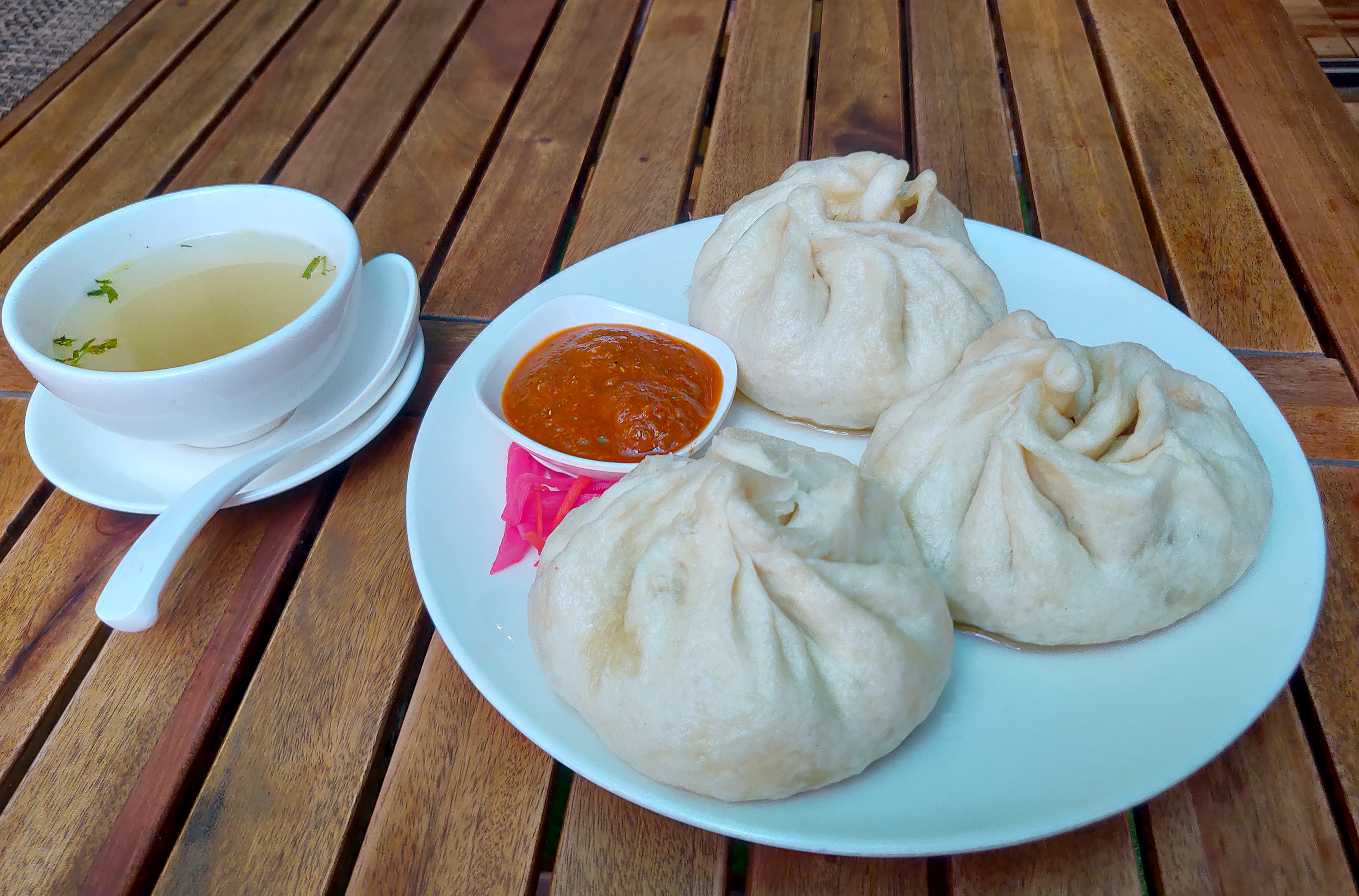
Before the plate of dha pao is emptied comes lowa khatsa. This Tibetan dish is prepared by filling the lungs (the restaurant uses buffalo lungs) with air and stuffing them with batter and spices. The stuffed lungs are then poached and stir-fried. Lowa khatsa is pan-fried with onions, capsicum, tomatoes and green chilli. The stuffed lungs have a dense, cake-y texture and actually taste like savoury pancakes. But the lungs drown in Little Tibet’s abundant use of what seems like bottled sweet-and-spicy tomato sauce. In order to actually taste the dish, you will have to order the plain lowa.
Having traversed the culinary landscape of Tibet, Bhutan makes its entrance with shamu datshi. Shamu means mushroom in Bhutanese and datshi means cheese stew. Even though ema datshi is the most popular of the datshi variations, because of the chilli-cheese dish’s notoriously spicy nature, this table sampled the much milder shamu datshi.
This datshi is served in a small bowl topped with two whole limp red chillies. The stew is thick and redolent with cheese, which the menu says is Bhutanese cottage cheese. Even though it is considered milder, the abundant use of crushed chilli adds an intense heat. The mushrooms soak up the rich datshi.
With more approachable iterations of traditional food, Little Tibet makes an earnest attempt to leave its mark in a part of Kathmandu where there is little representation of Tibetan cuisine. As Buddhists believe, the body changes but the soul remains the same. Except for the spiritless thenthuk, which lacked body, this restaurant certainly has soul.
Little Tibet Restaurant and Bar Rs 210 to 620 per person
Food: ★★★
Ambience: ★★★
Value: ★★★***
What do you think?
Dear reader, we’d like to hear from you. We regularly publish letters to the editor on contemporary issues or direct responses to something the Post has recently published. Please send your letters to [email protected] with "Letter to the Editor" in the subject line. Please include your name, location, and a contact address so one of our editors can reach out to you.




 14.12°C Kathmandu
14.12°C Kathmandu